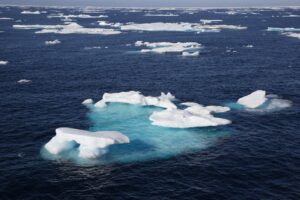Blue Carbon Offsets
April 17 2023
Blue Carbon Offsets: A Triple Win
The benefits of blue carbon offsets extend beyond carbon sequestration. They offer a triple win for the climate, biodiversity, and local communities.
Here at Balanced Earth, we will help you to choose the right carbon offset set project for you, we have projects all over the world for you to choose from.
Climate: Blue carbon offsets provide an effective strategy for mitigating climate change by reducing GHG emissions. By conserving and restoring blue carbon ecosystems, which act as carbon sinks, we can help offset emissions from various sectors such as transportation, agriculture, and energy production. This can contribute to achieving global climate goals, such as the Paris Agreement, which aims to limit global warming to well below 2 degrees Celsius above pre-industrial levels.
Blue Carbon Offsets
Biodiversity: Coastal and marine ecosystems are known for their rich biodiversity, providing habitat for numerous species of plants and animals, including endangered species. Conserving and restoring blue carbon ecosystems can help protect and restore critical habitats, supporting the recovery of threatened species and enhancing marine biodiversity. This can help maintain healthy ecosystems and contribute to achieving the United Nations’ Sustainable Development Goal 14, which aims to conserve and sustainably use the oceans, seas, and marine resources.
Local Communities: Many coastal communities around the world depend on blue-carbon ecosystems for their livelihoods. Mangroves, for example, provide nursery grounds for fish and other marine species, supporting local fisheries and providing a source of income for local communities. Conserving and restoring blue carbon ecosystems can help safeguard these livelihoods by maintaining the ecological services that these ecosystems provide, such as fishery resources, storm protection, and water quality regulation.

Blue Carbon Offsets
Conclusion About Blue Carbon Offsets
In conclusion, blue carbon offsets represent a promising nature-based solution for mitigating climate change while providing additional benefits for biodiversity and local communities. Coastal and marine ecosystems have a unique ability to sequester and store carbon at rates much higher than terrestrial forests, making them valuable carbon sinks. By conserving and restoring these ecosystems, blue carbon offsets can help offset carbon emissions from various sectors and contribute to global climate goals.
Furthermore, blue carbon offsets can support biodiversity conservation by protecting critical habitats and promoting healthy ecosystems. They also have the potential to provide socio-economic benefits to local communities, including supporting livelihoods dependent on coastal and marine resources. Blue carbon offsets offer a triple-win solution that addresses climate change, biodiversity loss, and sustainable development.
However, it is important to note that blue carbon offsets are not a standalone solution, and should be implemented in conjunction with other climate mitigation strategies. They also require robust monitoring, reporting, and verification mechanisms to ensure their effectiveness and integrity. Additionally, there are challenges related to governance, funding, and policy frameworks that need to be addressed for wider adoption and scalability of blue carbon offset projects.
In conclusion, blue carbon offsets have the potential to unlock the carbon sequestration capacity of coastal and marine ecosystems, providing a nature-based solution for climate change mitigation with multiple co-benefits. With proper planning, implementation, and oversight, blue carbon offsets can play a significant role in global efforts to combat climate change, conserve biodiversity, and support local communities, contributing to a more sustainable and resilient future.
